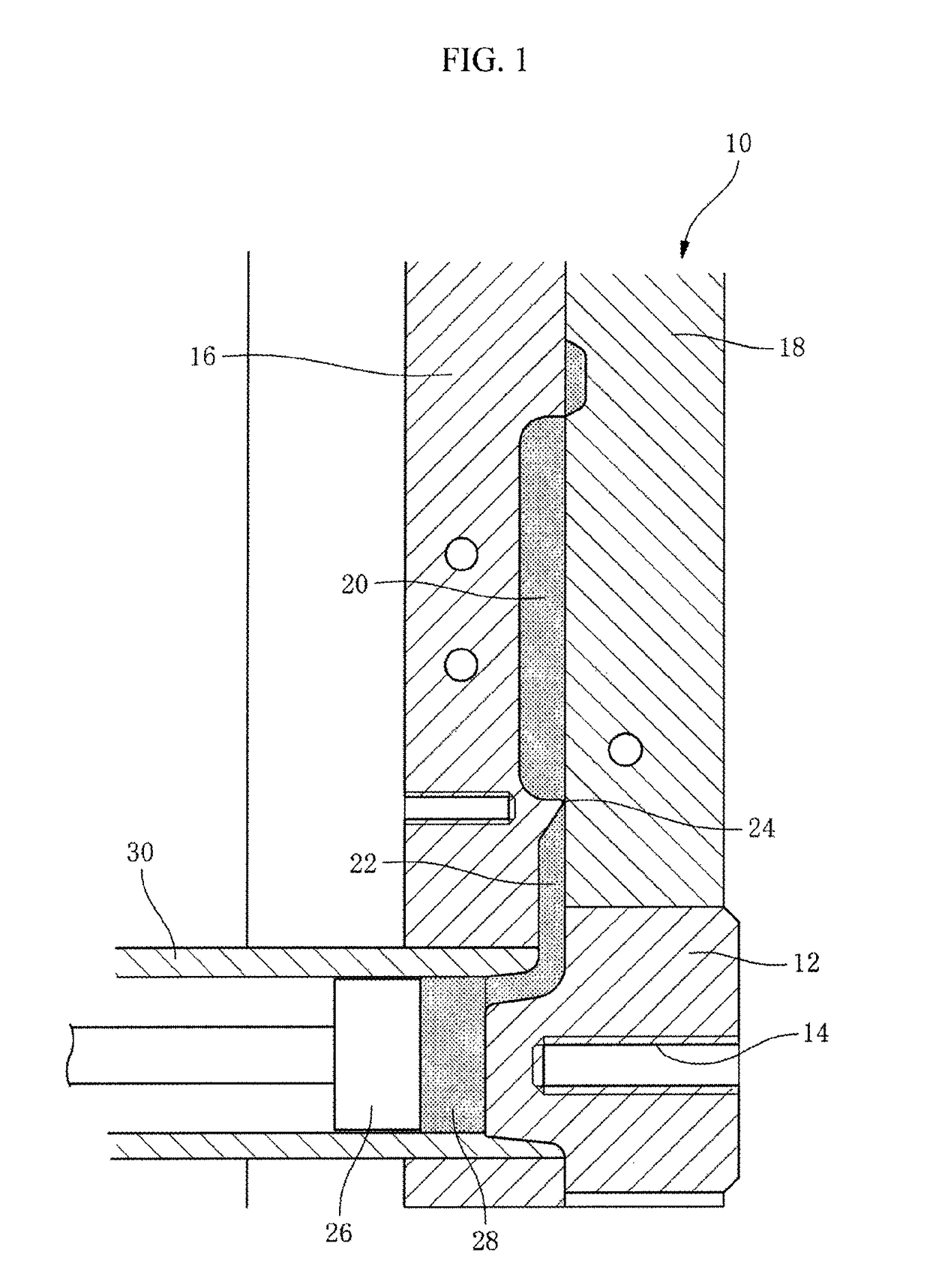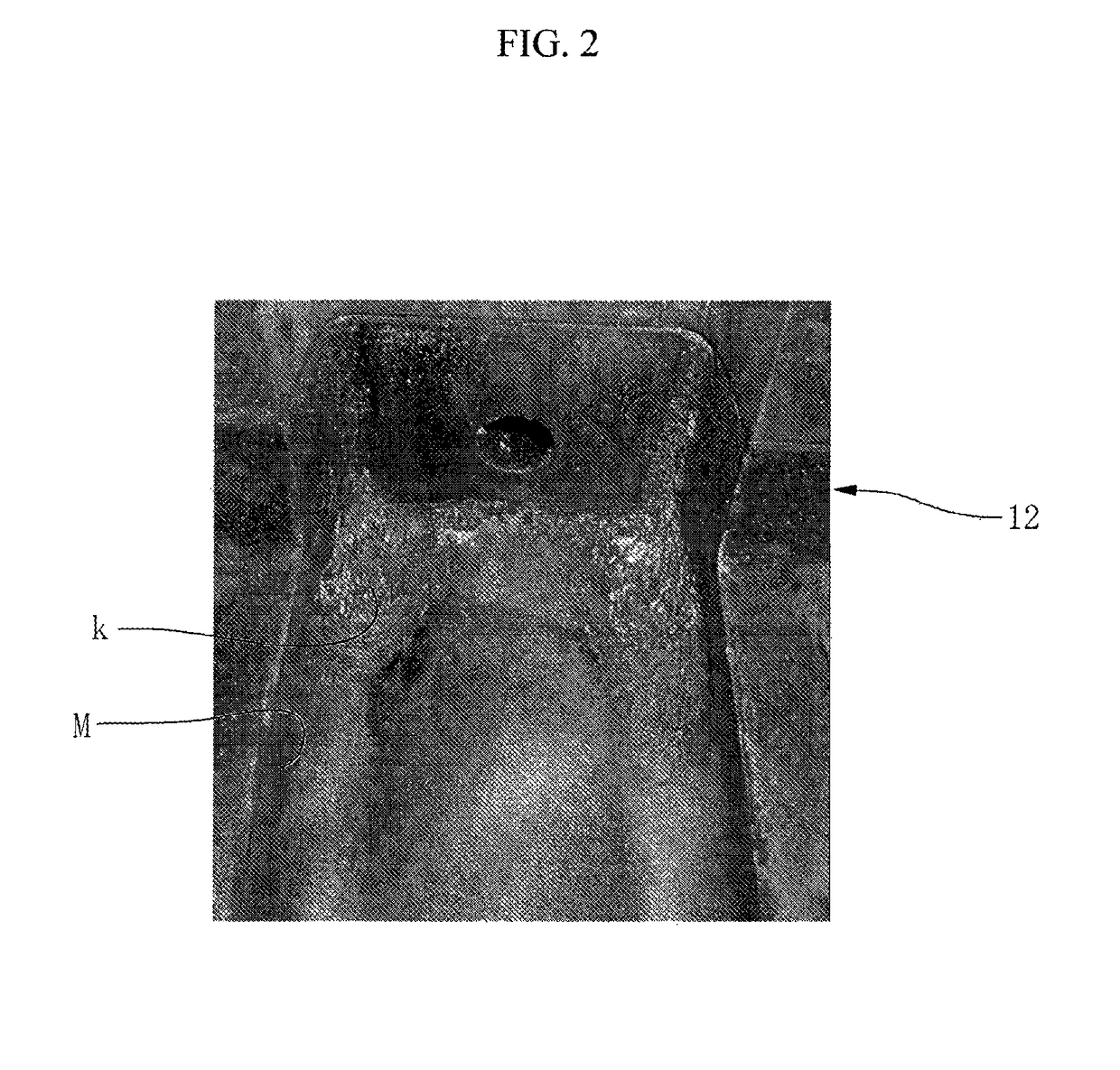Steel for mold, and mold
a mold and steel technology, applied in the field of die steel and mold steel, can solve the problems of reduced mold life, limited application, and prone to severe cracks in the mold, and achieve high high-temperature strength, high heat conduction performance, and high strength
- Summary
- Abstract
- Description
- Claims
- Application Information
AI Technical Summary
Benefits of technology
Problems solved by technology
Method used
Image
Examples
examples
[0161]Examples of the present invention are described below in detail.
[0162]A powder of each of seventeen types of steels respectively having the chemical compositions shown in Table 1 was produced by a gas atomization method. This powder was used to produce a spool core 12 as a part of the die casting mold 10 illustrated in FIG. 1, by three-dimensional additive manufacturing based on laser irradiation. This spool core 12 has a cooling circuit 14 formed thereinside. This cooling circuit 14 has a three-dimensional, spiral, complicated shape.
[0163]In Table 1, Comparative Example 1 is a die casting steel for hot working SKD61, Comparative Example 2 is an 18Ni maraging steel, Comparative Example 3 is a martensitic stainless steel SUS420J2, and Comparative Example 4 is a steel for mechanical structural use SCM435.
[0164]Although there are cases where each of the Examples according to the present invention contains impurity components in unavoidable amounts, the impurity components are not...
PUM
| Property | Measurement | Unit |
|---|---|---|
| coefficient of thermal conductivity | aaaaa | aaaaa |
| temperature | aaaaa | aaaaa |
| time | aaaaa | aaaaa |
Abstract
Description
Claims
Application Information
 Login to View More
Login to View More - R&D
- Intellectual Property
- Life Sciences
- Materials
- Tech Scout
- Unparalleled Data Quality
- Higher Quality Content
- 60% Fewer Hallucinations
Browse by: Latest US Patents, China's latest patents, Technical Efficacy Thesaurus, Application Domain, Technology Topic, Popular Technical Reports.
© 2025 PatSnap. All rights reserved.Legal|Privacy policy|Modern Slavery Act Transparency Statement|Sitemap|About US| Contact US: help@patsnap.com


